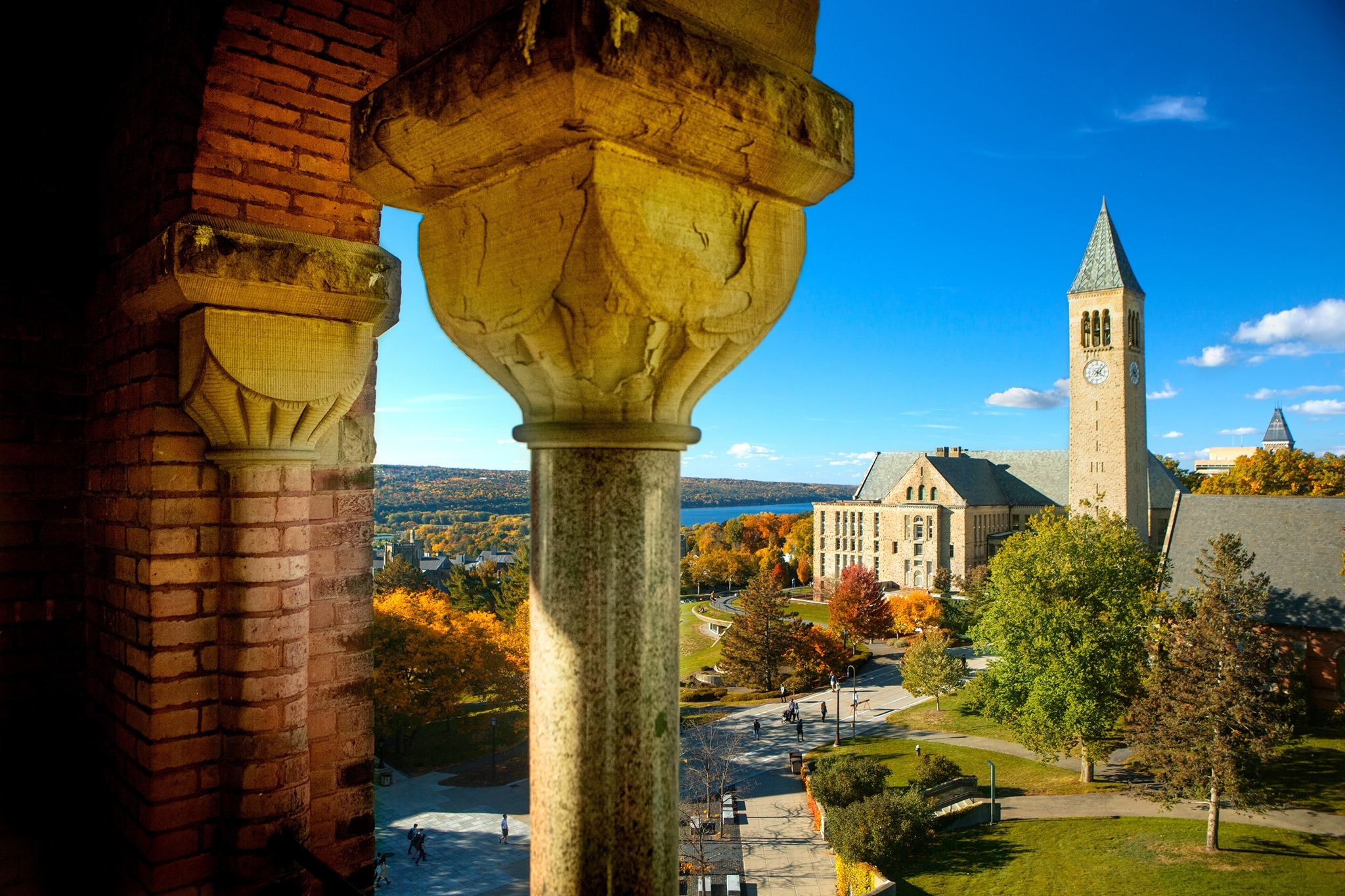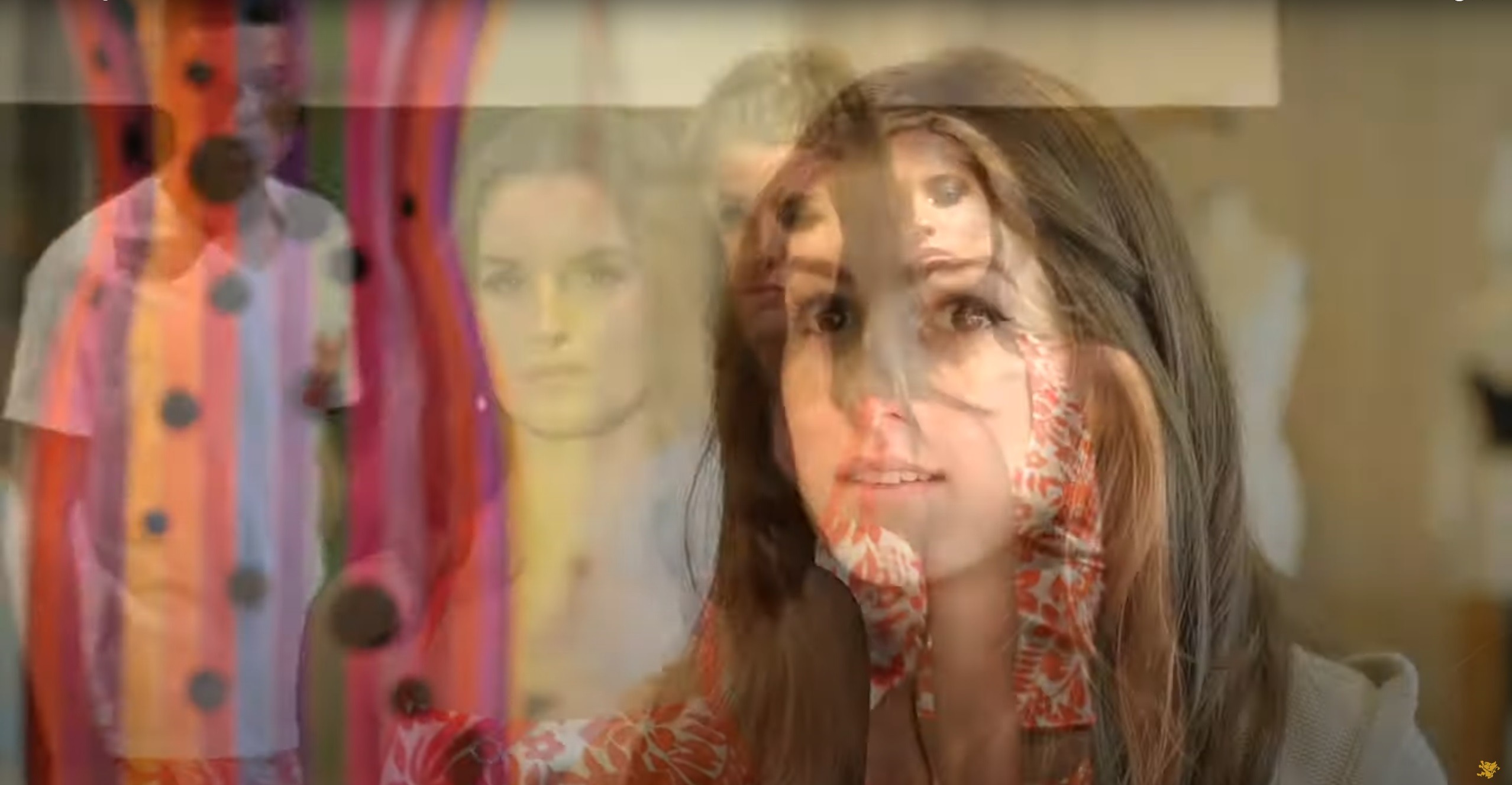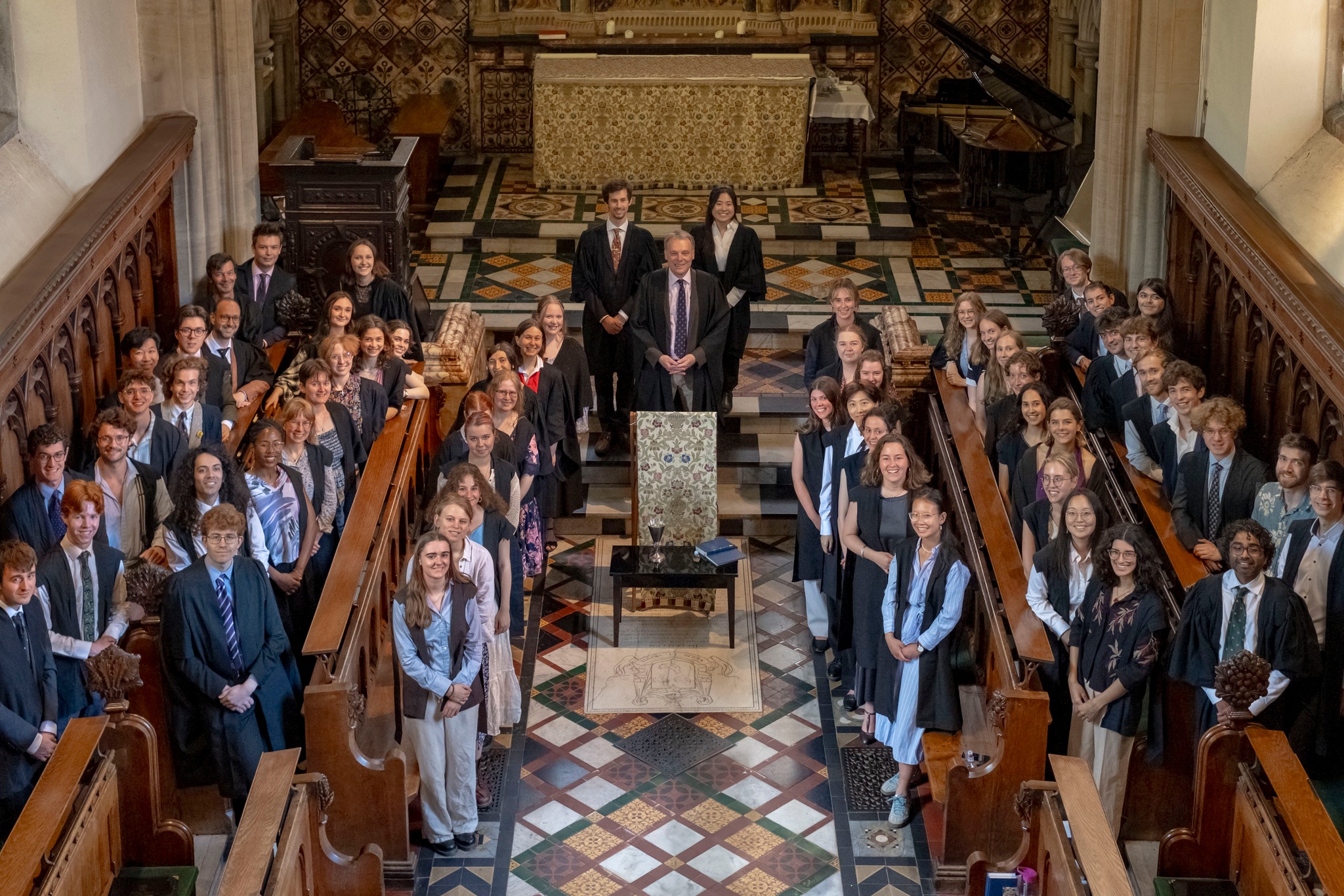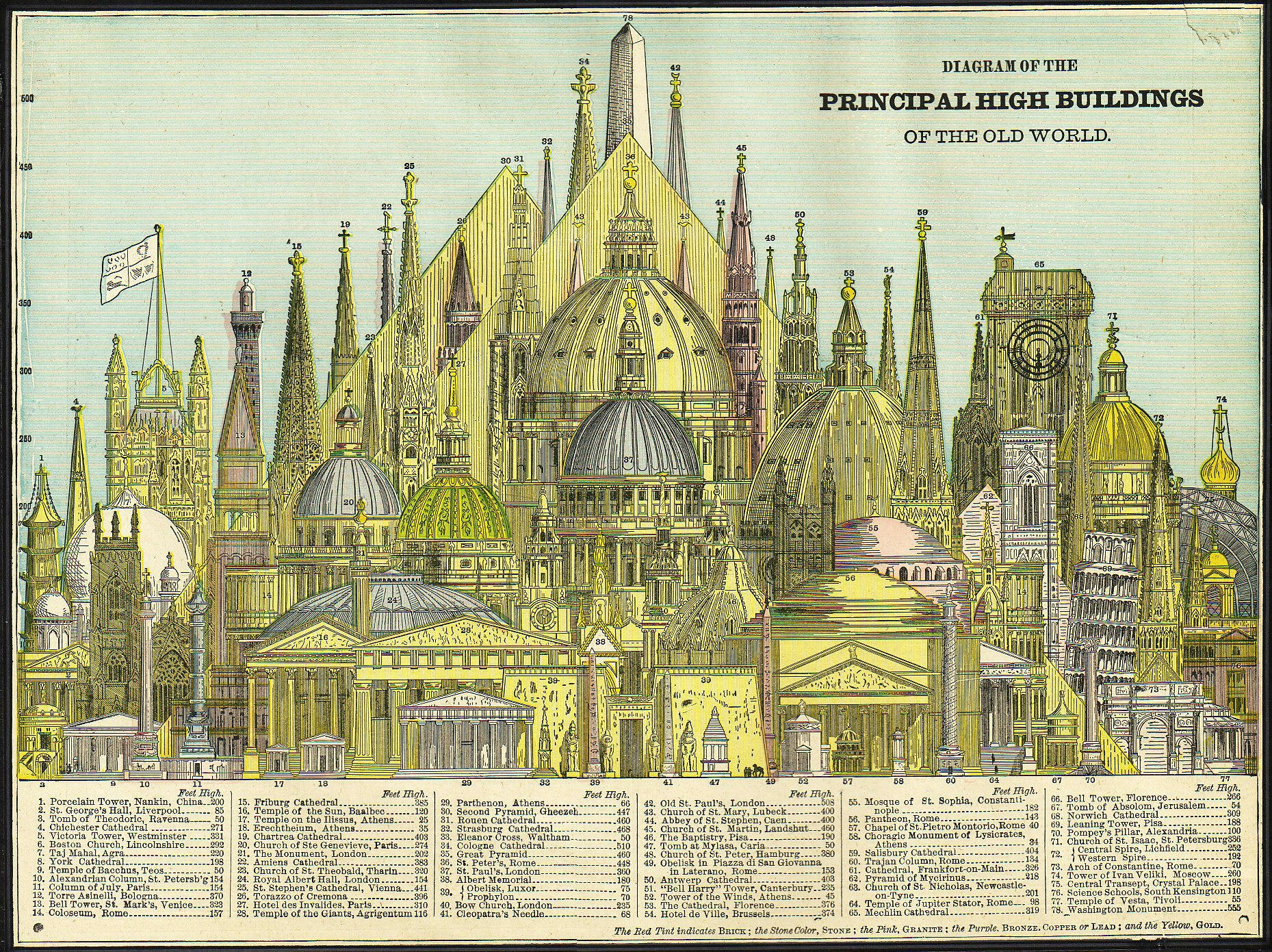Magenta Monday
- Home Page 30

Fashion Technology
Art presents a different way of looking at things than science;
one which preserves the mystery of things without undoing the mystery.
Everyone would basically be 50% happier if everyone dressed a little better. Clothes are everywhere. Everyone doesn’t have to be a clothes hound, but if the girls looked pretty and the guys looked nice, people would be happier and even more optimistic about the future. pic.twitter.com/iQcNPL1cMl
— O.W. Root (@NecktieSalvage) July 17, 2024
Helpppp! Got a black tie wedding next month 💒 and narrowed the dresses down to four!! But which one?! pic.twitter.com/f4XZmXeJx4
— Miss Gauld (@miss_gauld) April 5, 2024
Speaking of storms…Photo of an apple orchard in Ireland after a storm.
by Tony Egan pic.twitter.com/EFWQzCtUkz— Edward Elderman (@edwereddie) October 10, 2024
“There’s a Wideness in God’s Mercy”
Jesus College, Oxford: Founded in 1571 by Elizabeth I | Sacred Spaces
A hymn written by Frederick William Faber, an English theologian and hymn writer, in 1854. Originally published in his collection Oratory Hymns, it reflects Faber’s journey from Anglicanism to Roman Catholicism, emphasizing God’s boundless love and mercy. The hymn draws inspiration from Psalm 36:5 and Faber’s desire to convey divine compassion transcending human judgment.
Set to various tunes, notably Wellesley and Beecher, its simple yet profound lyrics celebrate God’s inclusive grace, urging believers to trust in divine forgiveness over rigid legalism.
Faber’s work was influenced by the Oxford Movement, which sought to renew Catholic elements in Anglican worship, and his hymns remain widely sung across Christian denominations. The hymn’s enduring appeal lies in its message of hope, reminding worshippers of God’s limitless love, which surpasses human limitations and extends to all creation, fostering unity and compassion.
As we enter examination season, it’s great to see our students having a well-earned break in the sun-filled Second Quad. Sending everyone best wishes and good luck for their exams! #youvegotthis #jesuscollegeoxford #finals pic.twitter.com/xmLUilyDhu
— Jesus College Oxford (@JesusOxford) May 18, 2025
1 The transgression of the wicked saith within my heart, that there is no fear of God before his eyes.
2 For he flattereth himself in his own eyes, until his iniquity be found to be hateful.
3 The words of his mouth are iniquity and deceit: he hath left off to be wise, and to do good.
4 He deviseth mischief upon his bed; he setteth himself in a way that is not good; he abhorreth not evil.
5 Thy mercy, O Lord, is in the heavens; and thy faithfulness reacheth unto the clouds.
6 Thy righteousness is like the great mountains; thy judgments are a great deep: O Lord, thou preservest man and beast.
7 How excellent is thy lovingkindness, O God! therefore the children of men put their trust under the shadow of thy wings.
8 They shall be abundantly satisfied with the fatness of thy house; and thou shalt make them drink of the river of thy pleasures.
9 For with thee is the fountain of life: in thy light shall we see light.
10 O continue thy lovingkindness unto them that know thee; and thy righteousness to the upright in heart.
11 Let not the foot of pride come against me, and let not the hand of the wicked remove me.
12 There are the workers of iniquity fallen: they are cast down, and shall not be able to rise.
History of Western Civilization Told Through the Acoustics of its Worship Spaces
Charlie Kirk (August 12, 2025): “Has U.S. President Donald Trump gone too far?”
Watersport
Athletic Competition Timing Standards
Today we update our understanding of best practice catalogs for outdoor and indoor watersport; primarily swimming and rowing. Use the login credentials at the upper right of our home page.
Michael Phelps Named No. 1 Athlete of Century By ESPN – https://t.co/ABuAyuQJBy pic.twitter.com/0swFlxT6ei
— Swimming World (@SwimmingWorld) July 18, 2024
USA Swimming and the National Collegiate Athletic Association Swimming are two distinct organizations that oversee different aspects of competitive swimming in the United States. USA Swimming governs competitive swimming in the United States across all age groups and skill levels, while NCAA Swimming specifically focuses on collegiate-level swimming and diving competitions within the NCAA framework. Both organizations play crucial roles in the development and promotion of swimming in the United States.
Governing Body:
USA Swimming is the national governing body for the sport of swimming in the United States. It is responsible for overseeing competitive swimming at all levels, from grassroots programs to elite national and international competitions.
NCAA Swimming: NCAA Swimming is part of the National Collegiate Athletic Association (NCAA), which governs intercollegiate sports in the United States. NCAA Swimming specifically deals with collegiate-level swimming competitions among universities and colleges.
Scope:
USA Swimming is responsible for organizing and regulating competitive swimming for all age groups and skill levels, from youth swimmers to Masters swimmers (adults). It oversees swim clubs, hosts competitions, and develops national teams for international events.
NCAA Swimming: NCAA Swimming focuses exclusively on college-level swimming and diving competitions. It sets the rules and guidelines for swimming and diving programs at NCAA member institutions.
Membership:
Individuals, swim clubs, and teams can become members of USA Swimming, allowing them to participate in USA Swimming-sanctioned events, access coaching resources, and benefit from the organization’s development programs.
NCAA Swimming: NCAA Swimming is composed of collegiate athletes who compete for their respective universities and colleges. Athletes are typically student-athletes who represent their schools in NCAA-sanctioned competitions.
Competition Format:
USA Swimming hosts a wide range of competitions, including local, regional, and national meets, as well as Olympic Trials and international events. Swimmers compete as individuals, representing their swim clubs or teams.
NCAA Swimming: NCAA Swimming primarily consists of dual meets, invitational meets, and conference championships at the collegiate level. Swimmers represent their respective universities or colleges, earning points for their teams in dual meets and competing for conference and national titles.
Scholarships:
USA Swimming itself does not offer scholarships. Scholarships for competitive swimmers are typically awarded by colleges and universities based on an athlete’s performance and potential.
NCAA Swimming: NCAA member institutions offer scholarships to talented student-athletes in various sports, including swimming. These scholarships can cover tuition, room, board, and other expenses, making NCAA swimming an avenue for athletes to receive financial support for their education.
Turning our pool deck into a GYM 🤙🏋️♀️ pic.twitter.com/vfilShA8Ef
— Bobby Guntoro (@bobbygunt) September 25, 2023
Your call 📱 pic.twitter.com/4ubIUklHCi
— uncwswimdive (@uncwswimdive) July 9, 2024
The moment a father consoles daughter after missing out on olympics medal
pic.twitter.com/kSHd4AIH4Z— Science girl (@gunsnrosesgirl3) August 8, 2024
Steeplechase Water Jump
The steeplechase event requires a combination of speed, endurance, and jumping ability, as athletes must clear the barriers while maintaining their pace and negotiating the water jump. The rules and specifications for the steeplechase event are set by the International Association of Athletics Federations the governing body for the sport of athletics (track and field) worldwide; with minor adaptations by the NCAA for intercollegiate competition.
The steeplechase is a distance race with barriers and a water pit that athletes must clear during the race. According to the NCAA Track and Field and Cross Country rulebook, the standards for the steeplechase water jump are as follows:
- Length: The water pit must be at least 3.66 meters (12 feet) long.
- Width: The water pit must be at least 3.66 meters (12 feet) wide.
- Depth: The water pit must have a minimum depth of 0.7 meters (2 feet 4 inches) and a maximum depth of 0.9 meters (2 feet 11 inches).
- Slope: The slope of the water pit must not exceed 1:5, meaning that for every 5 meters in length, the water pit can rise by no more than 1 meter in height.
- Barrier: The water pit must be preceded by a solid barrier that is 91.4 cm (3 feet) high. Athletes are required to clear this barrier before landing in the water pit.
These standards may be subject to change and may vary depending on the specific NCAA division (Division I, Division II, or Division III) and other factors such as venue requirements. Therefore, it’s always best to refer to the official NCAA rules and regulations for the most up-to-date and accurate information on the steeplechase water jump standards in NCAA competitions.
ASTM F 2157-09 (2018) Standard Specification for Synthetic Surfaced Running Tracks
This specification establishes the minimum performance requirements and classification when tested in accordance with the procedures outlined within this specification. All documents referencing this specification must include classification required.
ASTM F 2569-11 Standard Test Method for Evaluating the Force Reduction Properties of Surfaces for Athletic Use
This test method covers the quantitative measurement and normalization of impact forces generated through a mechanical impact test on an athletic surface. The impact forces simulated in this test method are intended to represent those produced by lower extremities of an athlete during landing events on sport or athletic surfaces.
ASTM F 2949-12 Standard Specification for Pole Vault Box Collars
This specification covers minimum requirements of size, physical characteristics of materials, standard testing procedures, labeling and identification of pole vault box collars.
ASTM F 1162/F1162M-18 Standard Specification for Pole Vault Landing Systems
This specification covers minimum requirements of size, physical characteristics of materials, standard testing procedures, labeling and identification of pole vault landing systems.
ASTM F 2270-12 (2018) Standard Guide for Construction and Maintenance of Warning Track Areas on Sports Fields
This guide covers techniques that are appropriate for the construction and maintenance of warning track areas on sports fields. This guide provides guidance for the selection of materials, such as soil and sand for use in constructing or reconditioning warning track areas and for selection of management practices that will maintain a safe and functioning warning track.
ASTM F 2650-17e1 Standard Terminology Relating to Impact Testing of Sports Surfaces and Equipment
This terminology covers terms related to impact test methods and impact attenuation specifications of sports equipment and surfaces.
Exploring the impacts of elite youth sports on family life
Purpose: This study explored the impacts of elite-level youth sport participation on family life.
Methodology: In-depth semi-structured interviews were conducted with parents of youth athletes (N = 17).
Findings: Parents extensively talked about the temporal demands of elite youth sports and necessity of time management. Three domains were found in parents’ accounts including, children’s time, parents’ time, and family’s time; temporal opportunities and challenges were identified within each domain. Time spent on sports was perceived positively, keeping children out of trouble and from video games/time online; however, it left no time for other activities. Although parents sacrificed their own activities to facilitate their child’s sports participation, they used the practice and tournament time to engage in personal interests, such as reading or exercising. Likewise, family’s time was restricted by youth sport schedules, but parents managed to turn car rides or tournament trips into quality family time.
Practical implications: Findings can be used by youth sport practitioners to enhance children and parents’ experiences.
Research contribution: Findings contribute to the literature by assessing the impacts of elite-level youth sports participation on family life.
Originality: The intricacies of how time-on task relates to parents’ relationship with their child’s sport have been understudied.
Stairways
This content is accessible to paid subscribers. To view it please enter your password below or send mike@standardsmichigan.com a request for subscription details.
Structures
Today we examine best practice literature for education building structures developed by accredited and consortia standards developers such as ASCE, ACI, AISC, ASTM, AWS, CRSI, ICC, NFPA and IEEE. The US education industry among the top three largest building construction markets; with annual new and renovated building construction running close to $100 billion annually.
We limit our coverage to low-risk regions in the US, such as areas with minimal seismic activity, low risk of flooding and moderate weather conditions. Another huge topic which we will likely break up into separate modules in the fullness of time. For now, we sweep through the basics:
Foundation
- Site Analysis:
- Conduct soil testing to determine its bearing capacity and composition.
- Ensure the site is properly graded and drained to prevent water accumulation.
- Foundation Type:
- Slab-on-Grade: Common in residential buildings. A concrete slab is poured directly on the ground.
- Basement: Provides additional living space and storage, common in residential buildings.
- Design and Preparation:
- Use rebar reinforcement to strengthen the concrete.
- Install vapor barriers to prevent moisture from seeping through the foundation.
- Properly compact the soil to prevent settling and shifting.
- Concrete Pouring:
- Use high-quality concrete mix suitable for the local climate.
- Ensure proper curing of the concrete to achieve maximum strength.
- Use expansion joints to accommodate temperature changes and prevent cracking.
- Waterproofing and Insulation:
- Apply waterproofing membranes or coatings to protect the foundation from water damage.
- Insulate the foundation to improve energy efficiency and prevent frost heave in colder climates.
Ironwork
- Materials:
- Use high-quality steel that meets industry standards (e.g., ASTM specifications).
- Ensure the steel is properly treated to resist corrosion, especially in humid or coastal areas.
- Design:
- Follow structural engineering guidelines and building codes for the specific type of building.
- Use appropriate load calculations to determine the size and placement of steel beams, columns, and reinforcements.
- Fabrication and Assembly:
- Ensure precision in cutting, welding, and assembling steel components.
- Use certified welders and follow welding standards (e.g., AWS D1.1/D1.1M).
- Pre-fabricate components where possible to ensure quality control and reduce on-site labor.
- Erection:
- Use proper lifting equipment and techniques to safely erect steel structures.
- Align and level steel components accurately before final fastening.
- Use bolted connections where possible for ease of assembly and future maintenance.
- Inspection and Quality Control:
- Conduct regular inspections throughout the construction process to ensure compliance with design specifications and building codes.
- Perform non-destructive testing (e.g., ultrasonic testing) on critical welds and connections.
- Protective Coatings:
- Apply protective coatings (e.g., galvanization, epoxy paint) to steel components to prevent corrosion.
- Maintain the protective coatings over the lifespan of the building.
Use the login credentials at the upper right of our home page.
Related:
New update alert! The 2022 update to the Trademark Assignment Dataset is now available online. Find 1.29 million trademark assignments, involving 2.28 million unique trademark properties issued by the USPTO between March 1952 and January 2023: https://t.co/njrDAbSpwB pic.twitter.com/GkAXrHoQ9T
— USPTO (@uspto) July 13, 2023
Standards Michigan Group, LLC
2723 South State Street | Suite 150
Ann Arbor, MI 48104 USA
888-746-3670























